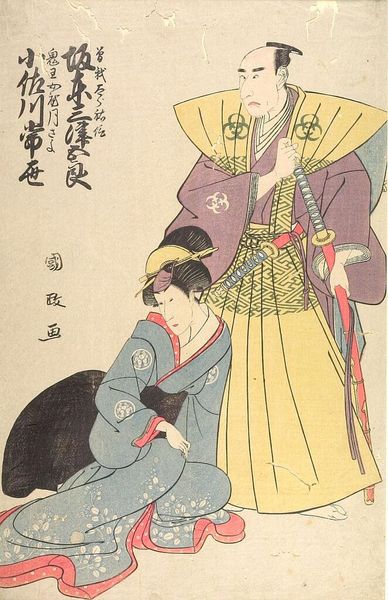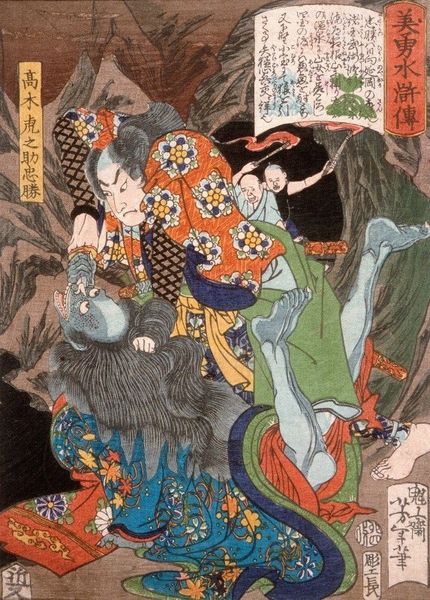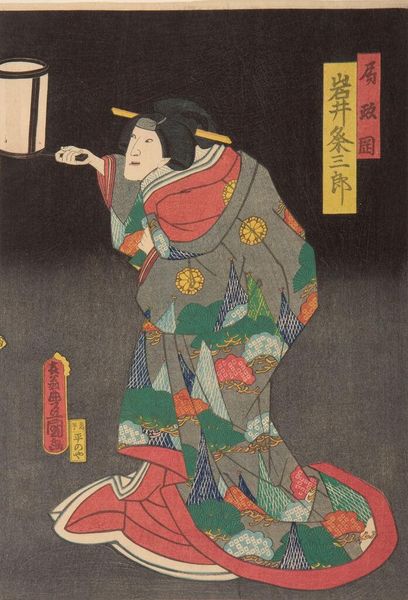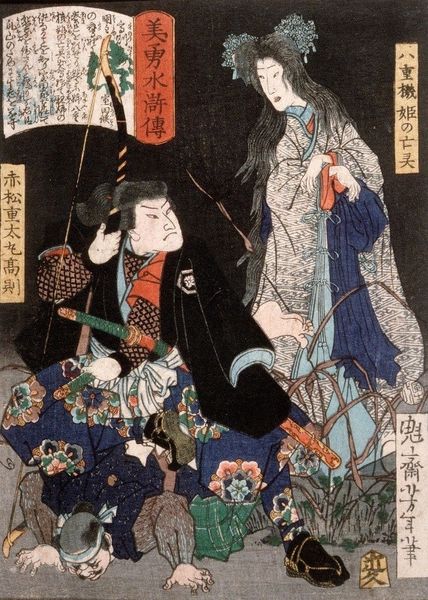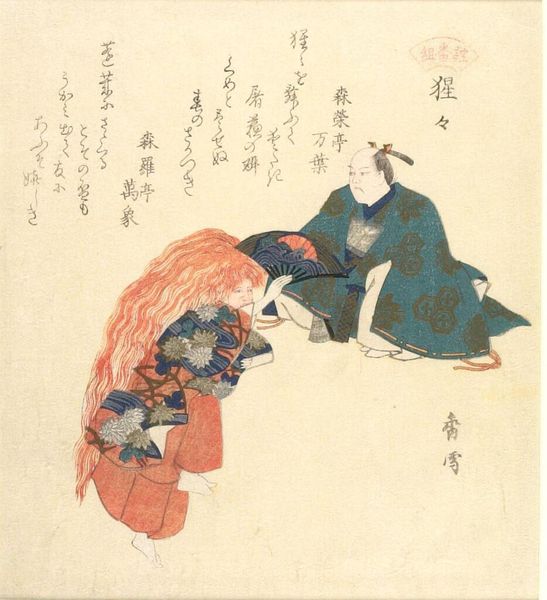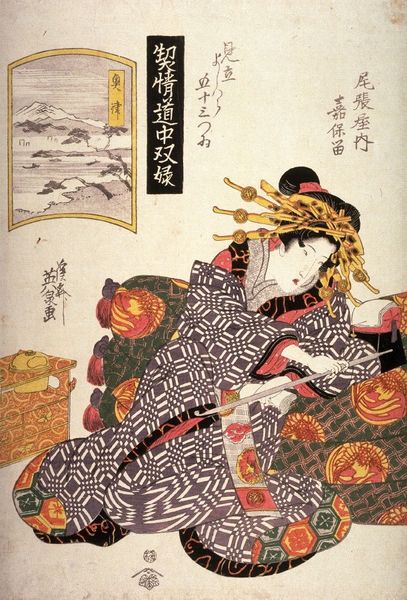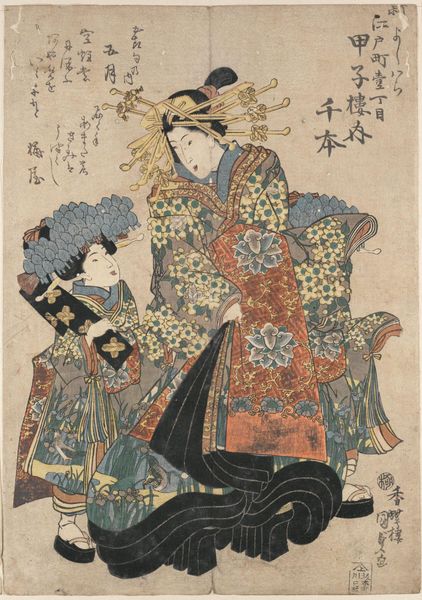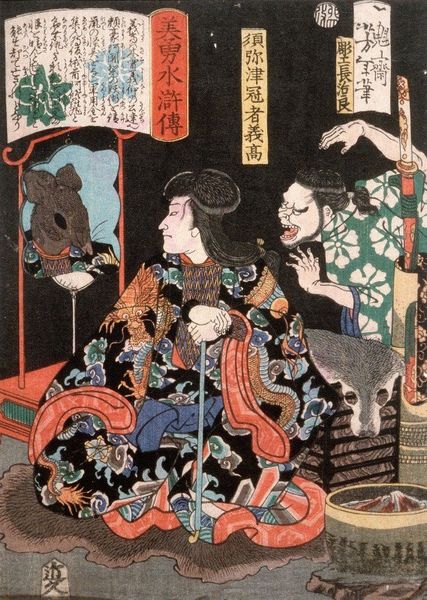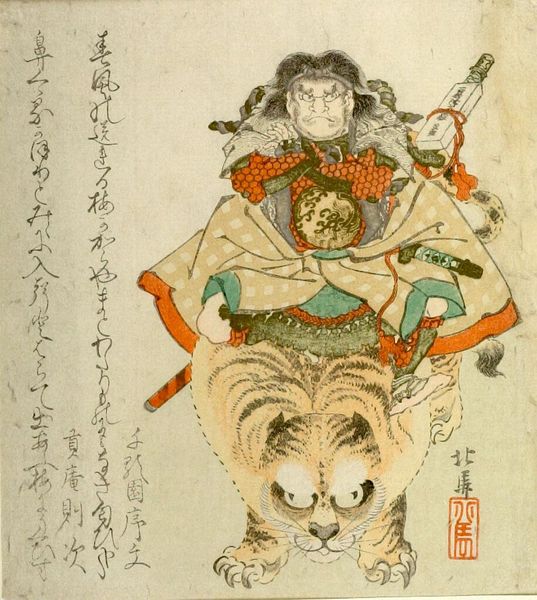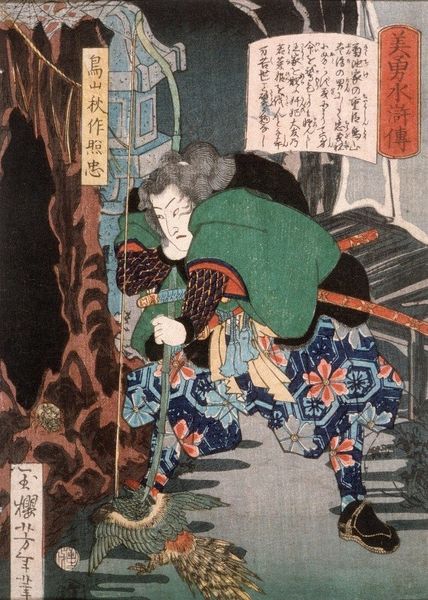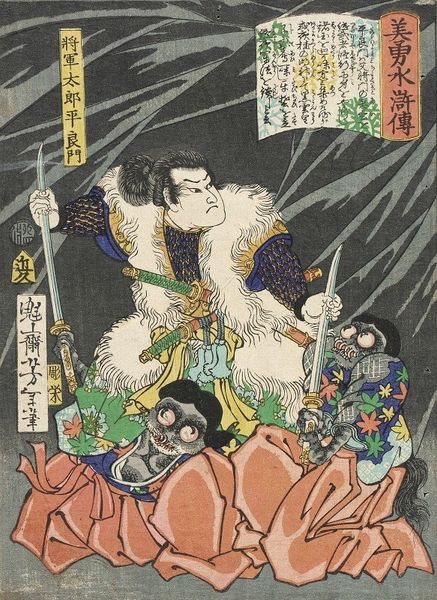
print, woodblock-print
#
narrative-art
# print
#
asian-art
#
ukiyo-e
#
figuration
#
woodblock-print
#
history-painting
Copyright: Public Domain: Artvee
Curator: This startling woodblock print is "Mutsuki Suginosuke Norifusa with a Ghost," crafted by Tsukioka Yoshitoshi in 1867. I’m struck immediately by the power of it—it looks so dramatic, like a scene pulled directly from a particularly haunting play. Editor: Yes! It’s intensely theatrical, even operatic. My eyes are immediately drawn to the ghost, hovering like a looming shadow. The light is hitting his face in a way that makes it seem like he's about to break out into a sinister smile. Curator: Ghosts in ukiyo-e prints weren't just cheap scares; they are symbols of lingering grievances, and disrupted harmony. Yoshitoshi frequently used these motifs. They were visual metaphors for unrest and political turbulence that followed the end of the Edo period. Editor: The ghost certainly has that unease about him! And then the figure of Mutsuki, pierced with arrows—his face, full of anguish, but almost defiant. Arrows can symbolize various things across cultures—divine wrath, piercing insight. What is that boulder, anyway? Curator: The rocky shape is like a natural monument. I imagine the arrows are a kind of chaotic energy—maybe violence that has struck at him for past wrongdoings, or to signify betrayal, and certainly something that disrupted the social and natural order. Editor: Betrayal, absolutely! The way he's clinging to it, maybe using that boulder as the only way he could ever steady himself or anchor himself again is something tragic. The bright colors, strangely, make the tragedy more pronounced. It creates this unsettling contrast with the intense dread the ghost exudes and the desperation from our lead character, like life flashing vividly before his eyes as he stands on the brink. It reminds us, and Yoshitoshi probably hoped that the audiences realized this: our heroes in narratives or society aren't infallible to error or harm. Curator: Yoshitoshi always was playing with those layers, offering narrative complexity in a format that could be dismissed as mere entertainment. The ghost is his own conscience—as well as a reminder of the turbulent world just outside of the drama, haunting both our subject and all of us as well. Editor: Absolutely. It's more than a ghost story; it’s a complex visual experience. This print carries a heavy weight. Now when I see this I imagine Mutsuki Suginosuke Norifusa might have been at the epicenter of that unrest, struggling against forces, literal and spectral.
Comments
No comments
Be the first to comment and join the conversation on the ultimate creative platform.
